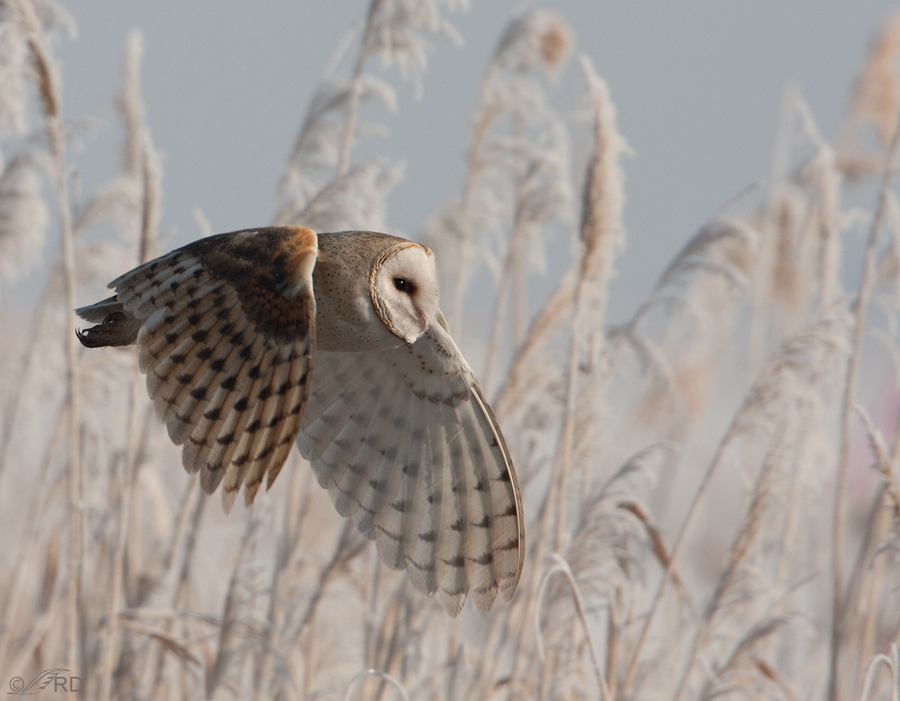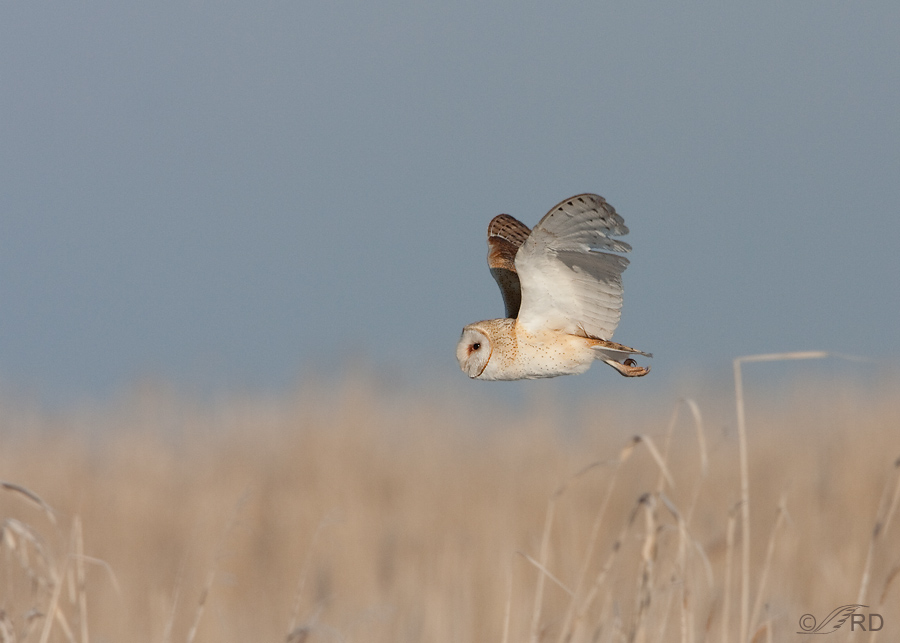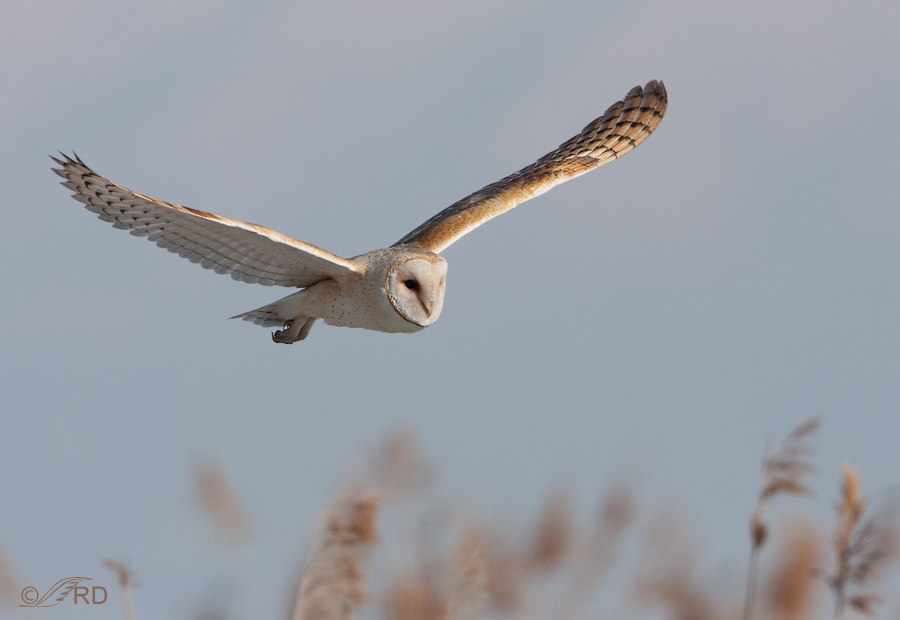Barn Owls are among my favorite avian subjects. They’re uncommon, elusive and rarely active in daytime so they’re devilishly difficult to photograph in good light – especially in flight. And they’re unique – so different from other owl species (heart-shaped facial disc, smaller eyes, a short squared tail and serrated central claws) that they’re given their own family classification – Tytonidae. They’re the most wide-spread species of owl on earth, though their numbers are declining.
Occasionally, very occasionally, I’ve had the opportunity to photograph them in daylight. Around here they can sometimes be found hunting for voles at the edge of Phragmites stands at the local marshes during the early mornings of the coldest days of winter. Phragmites is a very large perennial grass found in our wetlands that causes many problems for wetlands managers because it produces substances that are toxic to more beneficial species of marsh plants.
1/2000, f/8, ISO 400 1.4 tc
As problematic as Phragmites can be I’ve found it to be a wonderful background for photographs of birds in flight. And since these owls fly during daytime only when it’s very cold the Phragmites is often covered with heavy frost in the mornings which can soften the background and make it very pleasing to the eye. If the grasses are close to the bird they appear fairly well-defined.
1/2000, f/8, ISO 400 1.4 tc
But if they’re far away the bokeh of the background is softened even more, giving relatively subtle hints of texture and form. I think the sharper foreground phrags in this photo help to give depth to the image. If the owl had been bisected by the transition from blue sky to the browns of the grasses I don’t think this would have worked as well as it does (even though the bird is relatively small in the frame).
1/2500, f/8, ISO 400 1.4 tc
Sometimes the grasses aren’t directly behind the bird but below it. I like that effect too as they provide a sense of place and seem to anchor the bird in the image.
One interesting thing about Barn Owls is illustrated in this photo. Because their eyes are so deeply set in the skull it’s very difficult to get a catch light in the eye. I don’t think I’ve photographed any other species where getting light in the eye is so challenging.
1/2500, f/8, ISO 400 1.4 tc
At times when the Phragmites is at an intermediate distance behind the bird (and depending of course on what aperture you’re using) you’ll get just enough form, texture and color behind the bird to give a hint at the setting the bird is flying in. I like this effect also, especially with the frost on the grasses.
So yes, Phragmites is a scourge for wetland managers but for us bird photographers they can be a blessing and in some ways I really appreciate them.
Ron
PS – If you like Barn Owl images I have more posted here.






Ron,
We’re in the business of barn owls, kestrels and red-tailed hawks. You have some of the most amazing photos I’ve seen and I’ve seen a lot. Would love to have you share your work on my Nature’s Remedy Facebook page. It’s the avatar with the barn owl sitting on the nesting box. I already propped your web-site on it; hopefully it helps!
Glenn Prichard
Wonderful barn owls shots Ron, owls are one of those special birds, well done.
Thank you Susan. In the upper right hand corner of my blog there are links where you can subscribe by email or by post feed.
Ron,
I am a first-time visitor to your site, and I am impressed with the quality of your work. Your images of the barn owls are a treat to view, and I like the comments and explanations that you add. I agree with your vision that Phragmites make an excellent background to showcase the owls. Living in a warm climate in Southern California, I doubt that I will ever witness the barn owls with the Phregmites as you show them. I kindly thank you for sharing your experiences and shooting the owls in various positions. It is a beautiful learning experience for me. If you have an email newsletter posting new images, please add my email address to your circulation list.
Ron:
These are amazing. I can’t find a perched barn owl to photograph and you have a blog on which backgrounds you like for your shots of them in flight!
The barn owl’s eyes are more like cylinders than balls. They make orienting movements to environmental stimuli with head or body movements, rather than eye movements. I suppose the eyes need not protrude (protrusion making catch lights more likely?) if they are not going to be rotated.
They are just beautiful. I am with Cheryl. It makes my day when I see that you have put a new post up – and I have never been disappointed. Thank you.
Awesome job like always!
Beautiful pictures of beautiful birds. Thanks for sharing.
Wow! … again! That first shot actually made me quite tingly! Stunning – thank you so much for posting your photos – it really does make my day when I get an email saying you’ve put up more!